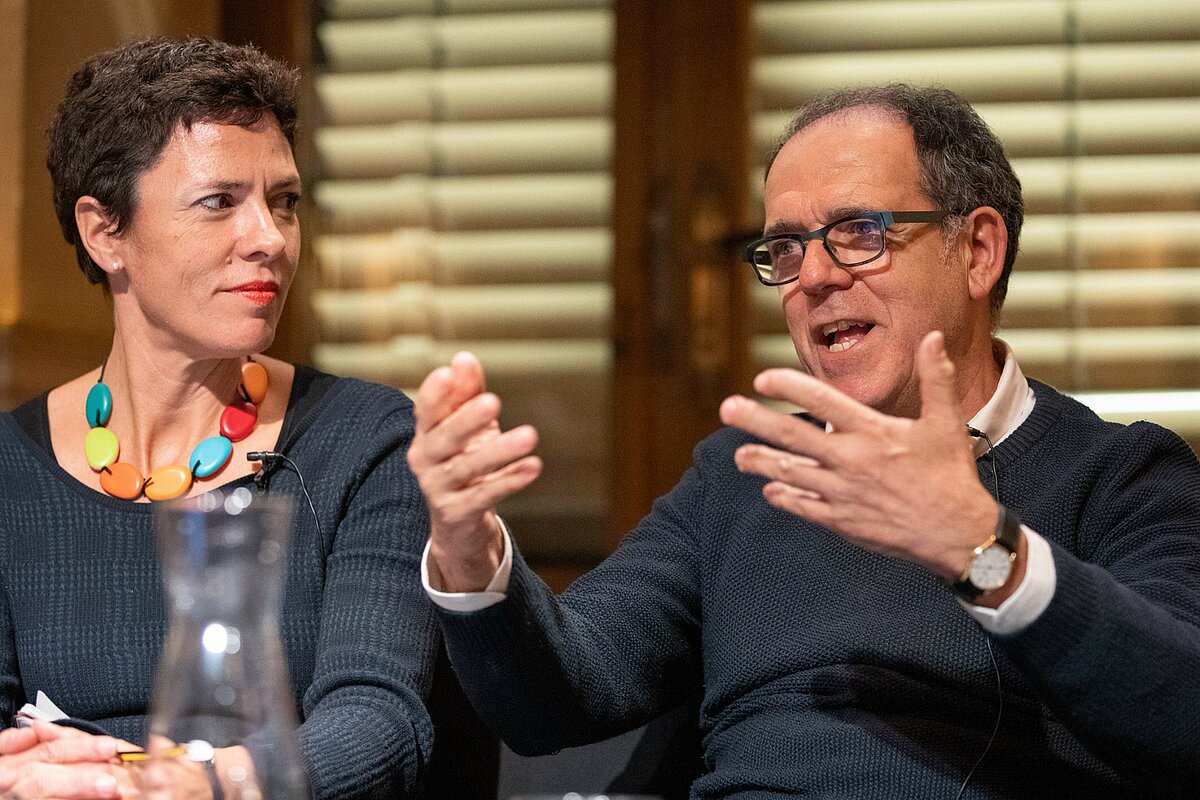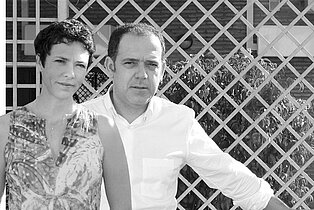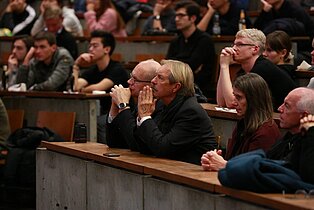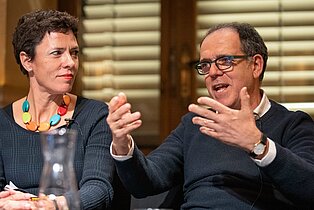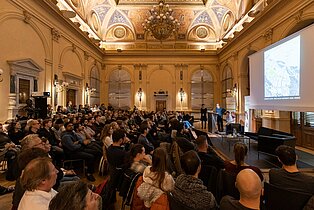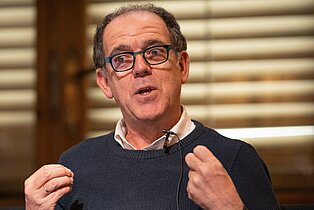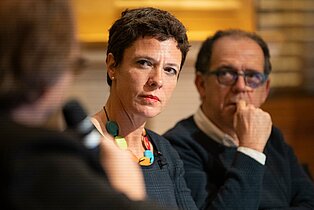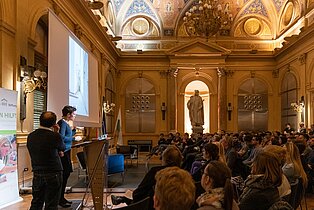Review | José Morales & Sara de Giles at the November Talks 2018 in Graz
Urban public space in a Mediterranean climate, historical old towns between modernity and tourism, all bridged by the role of architecture: On 12 November 2018, the team of the Spanish office of MGM Morales de Giles Arquitectos brought insights into architectural accomplishments from Seville to Graz. This lecture was the second in the series of the 2018 November Talks in the main hall, the ‘Aula’ at the technical university of TU Graz, arranged by the Sto Foundation.
Creating Better Towns - that was the vision espoused by José Morales and Sara de Giles, the architect duo from Seville. “We would like these towns to become more human. As architects, we are able to provide people with this gift”, stated de Giles has she outlined their intention. The intention to extend public space runs like a golden thread through this vision, one to which the projects of this office are committed, as Giles puts it, with the aim not of growing but of deriving more benefit from compactness.
For the Universidad Pablo de Olavida in Seville, MGM created a new building with 24 lecture theatres and institute rooms. Located on the outskirts of Seville, this building is meant to satisfy the wish for more space for this educational institution. However, there was also a wish to avoid a complete campus with its own roads. “We have not built a town”, states de Giles with emphasis. “We wanted a single building that floats freely in its surroundings and that requires no pre-urbanisation”. Embedded between the railway and the existing campus premises, the building has a structure that creates its own spaces: offset blocks, the hallmark characteristic of MGM, lets volumetric shapes form in a way reminiscent of caves hewn into a cliff face. The basement level remains free of elements. A fence was also deemed to be superfluous: it was more important to create a connection with the surrounding area.
The Instituto Cartujo hospital centre was erected in the Cartuja Technopark. Accessible right around the clock, with good public transport connections and featuring building elements arranged strategically; these were the criteria defining the new building. Examination rooms were to be located at basement level with patient rooms and wards on the upper floors. The dominant external features of this building are once again offset boxes, this time made of white perforated sheet metal, combined with glass. This combination enables natural light to flow into the building while also providing plenty of privacy. In the interior, boxes made of filigree cages are suspended from the ceiling like stalactites, creating a geometric space. Here, and this is a very desirable climate feature in Seville, rain can enter freely, while wind provides ventilation. Interior and exterior spaces merge fluidly, and public space is extended.
Located on the Campus Urban Paris-Saclay is an emblematic project: the new learning centre in the heart of the university. The integration of an existing wide access road and the creation of open spaces for students were the challenges for this architectural project. José Morales and Sara de Giles decided in favour of an organically shaped, airy and flat building, decorated by white louvres, enclosing inside itself the access road with its pedestrian traffic and wherever the surrounding trees occupied their own space, featuring recessed bays as though almighty nature had taken itself a bite out of man-made space. “There is no boundary between interior and exterior”, emphasised José Morales. Anyone walking through the new centre will not be able to tell whether they are inside a building or already outside in a public space - and that is the whole point, opined the duo. “In Graz it is usual for public space to be truly public. We also wish to create free spaces like that where we live”, explained Morales as he outlined their point of view.
The monastery of Santa Maria de los Reyes is the heart of an overlooked and semi-dilapidated part of the historical old town of Seville. In keeping with many old town centres, this one in Seville has become a museum for tourists while all of the original inhabitants have moved away. By converting and expanding this monastery, MGM wishes to upgrade the premises and turn them into an attractive venue for art and culture. Their project won the vote of the jury in the competition. Carpet-like areas of cobblestones interconnect this collection of historical buildings that have been renovated in a very low-key style. The former vegetable garden of the monastery has been retained as a free space and, despite great financial bottlenecks, this duo of architects has been able to transform the space around the monastery into a footpath through past history, and at the same time to turn it into an exhibition space for art, as well as a magical place of discovery. “The public space belongs to people”, stated de Giles with conviction. Instead of leaving it in a dilapidated and neglected state, we must make it accessible”.
Interview with José Morales & Sara de Giles
Find the Video-Interview on our YouTube-Channel.


